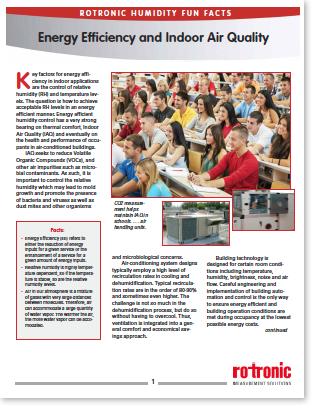Key factors for energy efficiency in indoor applications are the control of relative humidity (RH) and temperature levels. The question is how to achieve acceptable RH levels in an energy efficient manner. Energy efficient humidity control has a very strong bearing on thermal comfort, Indoor Air Quality (IAQ) and eventually on the health and performance of occupants in air-conditioned buildings.
Read more about humidity and temperature control for efficiency and air quality.
Fun Fact: Relative humidity is a temperature dependent property. As temperature rises, relative humidity decreases. As temperature decreases, relative humidity increases and approaches saturation.
Download the complete article - PDF file
Next issue: Fun Facts about the role of humidity measurement and control in Indoor Pools delivered to your inbox on August 13th.
Not subscribed? Click here to subscribe to the Fun Facts eNewsletter series.

